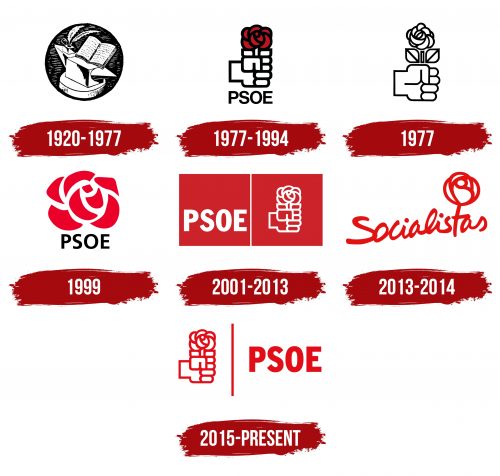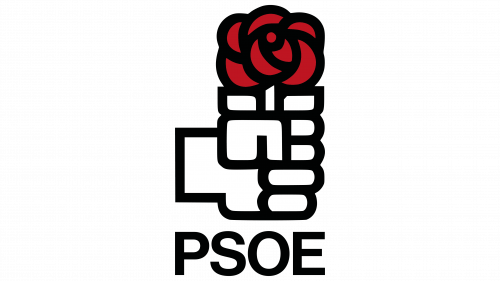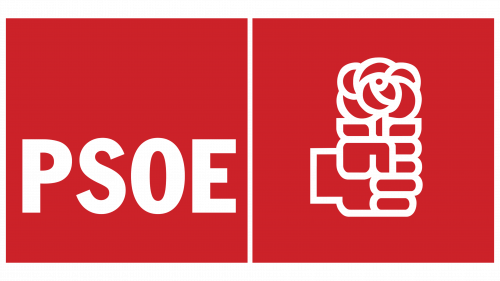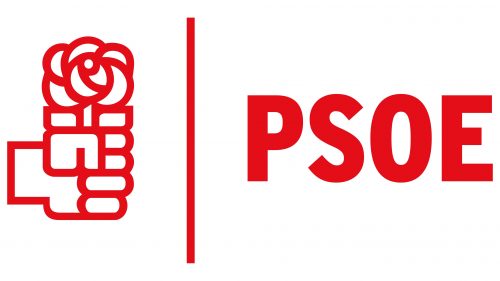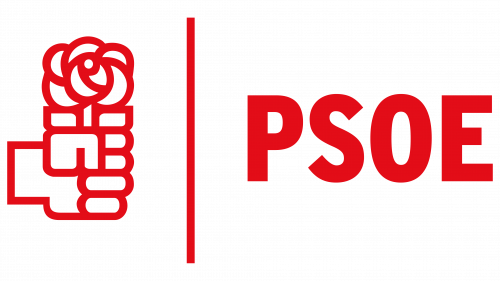 Partido Socialista Obrero Espanol Logo PNG
Partido Socialista Obrero Espanol Logo PNG
The Partido Socialista Obrero Español’s logo demonstrates the party’s inheritance of social-democratic values worldwide. The emblem shows the transformation of past struggles into the modern civilized advancement of ideals.
Partido Socialista Obrero Espanol: Brand overview
On May 2, 1879, in the heart of Madrid, Pablo Iglesias Posse led a group of intellectuals and laborers to create the Spanish Socialist Workers’ Party (PSOE). One of the world’s oldest socialist parties, PSOE has been a major force in Spain’s political arena since its inception.
Operating in secrecy due to restrictions on political activity, the organization embraced Marxist ideology and championed the working class. The founding of the General Union of Workers (UGT) in 1888 further cemented its influence among laborers.
The group celebrated its first major political triumph in 1910 when Pablo Iglesias was elected to the Spanish Parliament, becoming the first socialist deputy in Spain. During the Second Spanish Republic (1931-1939), the party played a key role in various government coalitions, pushing for progressive reforms. Supporting the Republican government during the Spanish Civil War (1936-1939), the group faced exile after Francisco Franco’s Nationalists emerged victorious.
Under Franco’s dictatorship (1939-1975), the organization operated clandestinely and maintained international socialist connections despite being banned. A turning point came in 1974 when Felipe González, a young lawyer, was elected General Secretary at the party’s congress in Suresnes, France. Under González, the group transitioned from Marxism to social democracy, modernizing its platform.
With Franco’s death in 1975, Spain’s path to democracy began, and the organization was legalized, quickly rising as a dominant political force. The 1982 general elections saw the party win an absolute majority in Parliament. Felipe González, as Prime Minister, led Spain through a transformative 14-year period, modernizing the economy, reforming education, and expanding rights for women and minorities. Spain joined NATO in 1982 and the European Economic Community in 1986 during this era.
In 1996, the group lost to the People’s Party (PP) and entered a phase of opposition and internal renewal. José Luis Rodríguez Zapatero’s leadership saw the organization return to power in 2004, enacting progressive social reforms, including legalizing same-sex marriage and expanding women’s rights.
The global economic crisis 2008 hit Spain hard, eroding the group’s popularity and leading to a significant defeat in the 2011 elections. Pedro Sánchez became the leader in 2014, facing internal conflicts that led to his resignation in 2016. Sánchez regained leadership in 2017 after winning internal elections.
June 2018 marked the group’s return to power through a successful no-confidence vote against Mariano Rajoy’s government, making Pedro Sánchez Prime Minister of a minority government. The April 2019 general elections saw the party as the largest in Parliament, yet unable to form a government, leading to a repeat election in November 2019. Eventually, the organization formed a coalition government with the left-wing Unidas Podemos.
Meaning and History
What is Partido Socialista Obrero Español?
It is a political party in Spain. The party adheres to social-democratic and leftist ideals. Its main goal is to achieve social justice and equality. The party significantly influences the country’s political life and participates in elections at various local and national levels.
1920 – 1977
The round emblem includes central information regarding the party’s views and values.
The sturdy and reliable anvil in the center of the image represents the foundation of the working class movement. Party members come from industrial backgrounds, and the organization represents workers’ interests.
On the anvil lies an open book and a writing set, emphasizing the continuous growth and education necessary for workers to understand the laws and articulate their position effectively.
1977 – 1994
The 1977 emblem includes the main symbols of the socialists and democrats that the party is ready to offer the country. A red rose held in a fist looks stylish and beautiful. The fist represents the struggle of the working class, while the rose symbolizes the beauty of the future world and the bloodshed to create it.
The party decided to move away from its Marxist past and embrace social-democratic ideas, which allowed it to gain 29% support and become the unofficial opposition. The movement appealed to modern youth, passing on the baton of the struggle for freedom and an equal future for the people of Spain.
1977
The image lost its colors and bold lines to reflect renewal and the reevaluation of values. The party is seeking new paths and ideas suitable for the future.
1999
At the turn of the millennium, the PSOE party actively modernized its image to attract new voters and strengthen its position in Spain’s political arena. The new logo, introduced in 1999, symbolized renewal and progress, reflecting the party’s readiness for new challenges and reforms to ensure the country’s prosperity. During this time, PSOE actively promoted social policy and economic reforms to make Spain more prosperous.
The PSOE party logo consists of an image of an open red rose and the party’s abbreviation at the bottom.
The red rose is a symbol of the socialist movement worldwide. It represents beauty, strength, and the readiness to fight for justice and equality.
The logo symbolizes the energy and determination of the PSOE party in their efforts for the benefit of Spain. The open rose highlights the party’s commitment to the country’s prosperity and the well-being of its citizens.
The abbreviation “PSOE” is rendered in a strict and modern font, emphasizing the clarity and precision of the party’s political position.
The main colors of the logo are red and black. Red symbolizes the socialist movement and energy, while black symbolizes seriousness and formality.
2001 – 2013
The party underwent reformation and a change of leadership. The new symbol incorporated two emblems, representing the traditional and new values of the movement. The first emblem, a red square, featured the party’s abbreviation with a white heart, symbolizing the party’s commitment to peace and condemnation of the war in Iraq. The second emblem, also a red square, displayed the familiar rose in a fist.
2013 – 2014
The emblem reflects the 2013 update of the party platform, which aimed to attract more followers. The handwritten word “Socialistas” looks very personal and unique. This approach emphasizes care and attention to voters’ needs. The letter “t” is transformed into a rose, maintaining the connection with the party’s past symbols.
2015 – today
2015, before the elections, PSOE introduced a new logo to emphasize its renewed image and commitment to progress. This decision was part of a broader strategy to restore trust and attract new voters after previous losses and declining popularity. The new symbol demonstrated the party’s readiness for change and modernization while preserving its roots and core values.
The Spanish Socialist Workers’ Party (PSOE) logo has two key elements: a clenched fist holding a rose and the abbreviation “PSOE.”
The fist with the rose represents the struggle and socialist values that have always been at the party’s heart. It symbolizes unity, strength, and solidarity in the labor movement. The rose in the fist emphasizes the ideals of beauty and hope inherent in socialist ideology.
The vertical line between the fist with the rose and the abbreviation “PSOE” symbolizes the separation of the past and the present, showing the party’s evolution. The line underscores the commitment to progress and renewal.
The red letters “PSOE” are rendered strictly and neatly, reflecting the party’s clear and precise stance. The sans-serif font highlights modernity, dynamism, stability, and confidence.
The red color in the logo is traditionally associated with the socialist movement, symbolizing strength, energy, and determination. The white background represents the party’s purity, honesty, and openness to change.
